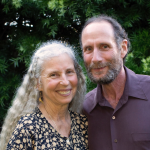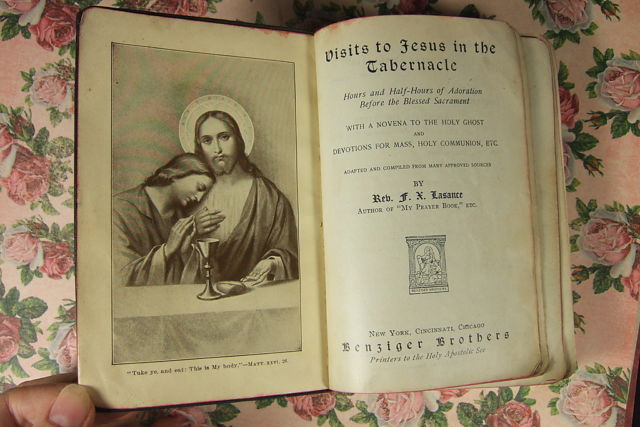Roots and Evolution of Mindfulness
Before reading this article, listen to a spoken introduction with Joel and Michelle Levey.
When we first began our study, practice, and research of mindfulness in the early 70s, we knew fewer than a handful of people who were involved in this path of practice. As our practice and research matured, we began to develop mindfulness-based programs in medicine, higher education, and business. In the mid-70s and early 80s, we knew of no one else bringing these methods into the mainstream. Gradually over the years, a groundswell of insight, interest, and research has emerged, creating a host of benefits and challenges, clarity and confusion, that inspires and confounds the modern mindfulness movement.
Our intent in composing this brief article is to offer an overview of some key perspectives on mindfulness. For people relatively new to mindfulness, it’s helpful to have a clearer understanding of its roots, shoots, and trends in order to access the deeper meaning, purpose, and value of this vital practice.
To the degree to which we wake up with mindfulness and learn to open our hearts and minds, the walls of our conventional, familiar, consensus view of reality become more clear, open, and transparent, revealing a deeper, vaster, multidimensional, and interrelated view of the actual nature of reality than we have previously imagined. This is why what we call mindfulness meditation is traditionally known as Vipassana, or ‘Insight Meditation.’ Mindfulness gives us access to insight and the direct, non-conceptual intuitive wisdom that liberates us from our misconceptions regarding the nature of reality and the true nature of ourselves.
While mindfulness is certainly widely adopted and practiced, our experience is that surprisingly few people are aware of its deep roots and origins in wisdom traditions—its more profound meanings, value, highest implications, and most intriguing applications. Our intent here is to offer insight, inspiration, and illumination on these facets of the jewel of mindfulness as it shines out in our modern times.
Roots of Mindfulness
Mindfulness as a technical term has its historical origins in the ancient Pali word sati used by the Buddha in his teaching on mindfulness over 2600 years ago. Sati literally translates as “memory”- as in remembering what you are paying attention to in the present moment of awareness. In an attempt to meaningfully translate treasured Buddhist meditation manuals, the English translator Rhys Davids was the first to offer an English translation using “mindfulness” in 1881, and, by 1910, mindfulness had become the generally accepted norm. Davids was inspired to use the term “mindfulness” by its use in an Anglican prayer that says, “Always be mindful of the needs of others.” Interestingly, from this initial choice to translate sati as mindfulness, there is an implication that mindfulness is also akin to a newly emerging meme of kindfulness which reminds us that we pay attention to what we care about. The widespread use of the term ‘mindfulness’ has endured to this day where we find the meaning of mindfulness continuing to be adapted, as it is incorporated into common use with an ever expanding variety of mindfulness-based interventions (MBIs) that are emerging within health science, corporate, and high-performance arenas of contemporary culture.
Unfortunately, the meaning of the term mindfulness also is becoming increasingly misconstrued through its association with deep relaxation without mindful awareness, creative imagination visualizations, getting a good night’s rest, ‘mindfulness chairs,’ mindful men’s clothing, or even mindful mayonnaise—all of which have little or nothing to do with the meditative practice of mindfulness. Some respected teachers in the realm of mindfulness have gone so far as to say that the word ‘mindfulness’ has all but lost its original meaning.
Roots of the Modern Mindfulness Revolution
While the teachings of mindfulness practice have endured for millennia since the time of the Buddha, the contemporary “mindfulness revolution” was propelled into modern times by the colonial thrust of the British Imperial Army invading and conquering the Buddhist kingdom of Burma in November 1885.
For centuries the Burmese people regarded their king as ‘the protector of the Dhamma‘- the liberating teachings of the Buddha which, when taken to heart, have the power to free us of our delusions and confusions by opening our wisdom eyes to directly discern things as they truly are. Mindfulness is the primary practice of these liberating teachings, and its power lies in quieting the conceptual dualistic overlay of thoughts to allow direct insight into the true nature of reality to arise clearly in the mind.

As the Brits marched into the capital city of Mandalay, the Burmese people looked on in horror as their beloved king and his family, surrounded by British soldiers brandishing rifles, were taken from the royal palace and unceremoniously loaded in an oxcart that carried them to a waiting steamship that would carry them into exile. The royal palace was then transformed into an officers’ club for drinking, dancing, and socializing!
A profound wave of concern rippled through Burmese society giving rise to an unprecedented cultural revolution that activated the Burmese people to protect the precious and vulnerable teachings of the Dhamma. Foremost among these cherished teachings was the practice of mindfulness.
Up to this time in Burma and throughout Southeast Asia, the teachings and practice of mindfulness had been mostly held within the monastic community of ordained monks and nuns, while the religious practices of the lay community focused primarily on generosity and giving of alms to generate spiritual merit, with the assumption that lay people were unlikely to actually realize enlightenment through practicing meditation.
With the advent of the British invasion and the king’s exile, visionary teachers within the monastic community, lead by the monk Ledi Sayadaw, and the householder Saya Thetgyi spread the practices of the Vipassana tradition, from which mindfulness is derived, throughout secular society. In the decades that followed, a contemplative cultural revolution spread throughout Southeast Asia giving rise to a renaissance and wide diffusion of mindfulness teachings with both the monastic and lay communities. (Braun, 2014)
Three Main Streams of Mindfulness Practice
The next wave of mindfulness revolutionaries appeared as droves of globe trotting spiritual seekers, peace core volunteers, government spooks, and mind scientists who traveled to Asia in the 1960s and 70s intent on seeking out enlightening teachers, wisdom teachings, and liberating contemplative technologies. Word of inspiring teachers and meditation retreats quickly spread through the social networks of those times drawing early waves of contemplative pilgrims to the monasteries and meditation centers of Southeast Asia to get their first immersive and transformative experiences of intensive mindfulness meditation practices, which were often presented in 10 day silent retreat formats or longer even more intensive retreats.
Through the influence of many of these early adopters of mindfulness, three principle streams of mindfulness practice have flowed into modern Western culture.
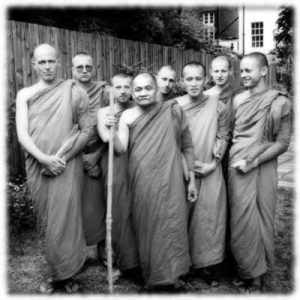
Insight Meditation: One stream of mindfulness practice came to the West through the teachings of Mahasi Sayadaw, U Pandita, Ajahn Chah, Buddhadāsa Bhikkhu, and other Thai and Burmese teachers of the “forest monastery” tradition which emphasized a blend of mindful breathing, noting and noticing of the nuances of momentary changing experiences, mindful walking, mindful eating, integrating mindful awareness into every activity, and resting in open clear awareness without grasping at any momentary experience. This lineage of mindfulness practice is widely referred to as “Insight Meditation” and was introduced to the West primarily through the influence of Jack Kornfield, Sharon Salzberg, and Joseph Goldstein who co-founded the Insight Meditation Society in Barre, Massachusetts in 1975. Kornfield later also co-founded the Spirit Rock in Marin, California in 1988 with a number of other teachers.
The wise and creative teachings offered at these two centers alone have inspired tens of thousands of people over the past 40+ years, giving rise to hundreds of other practice centers around the globe, and playing a significant role in inspiring the global diffusion of mindfulness practice into higher education, medicine, business, military, government, sports, and other arenas of modern life. Within this stream many other respected teachers, including Anagarika Munindra, Dipama, Ajahn Amaro, Ajahn Sumedho, Thannasaro Bhikkhu, Taungpulu Sayadaw, and Dr. Rina Sircar, to name but a few, have deeply inspired the diffusion of mindfulness teachings throughout North America, UK, and Europe.
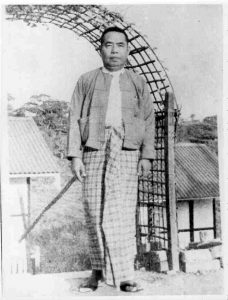
Vedana Vipassana: The second stream came to the West from the Burmese teacher U Ba Khin, the Accountant General of Burma, who founded the International Meditation Society in Rangoon in 1952 where he attracted the attention of many international students and teachers. As a lay practitioner and respected lineage holder from Saya Thetgyi of the vedana vipassana tradition of mindfulness practice, and also a respected accountant, U Ba Khin accepted the invitation from the Burmese government to assume the role of Accountant General and to assume leadership in order to route out the corruption in the Burmese Treasury Department. U Ba Khin accepted this appointment with two conditions. First was that one wing of the Treasury Department would be transformed into a meditation hall where members of his staff could come and meditate at any time. Second, was that everyone on his staff in the Treasury Department would train with him and participate in at least one intensive ten-day silent Vipassana style mindfulness retreat. As U Ba Khin said, “I refuse to work with incompetence.”
U Ba Khin’s style of mindfulness practice focused on developing concentration through single-pointed concentration on the breath, and then the close application of mindfulness by scanning or “sweeping” mindful awareness slowly through the body from the top of the head to the toes, over and over again, for up to 20 hours per day, leading to a profound state of vivid mental clarity and the purification of embedded congestion within the gross and subtle body. In this austere and intensive style of practice there is only sitting meditation, with no mindful walking, yoga, mindful eating or other practices at all.
In his later life, U Ba Khin passed his legacy of teachings on to seven teachers including S.N. Goenka (a Burmese businessman who is widely known in the West), Robert Hover (a former U.S. aeronautical engineer), Ruth Denison (a German pioneer in embodied movement practices), and John Coleman (a former British MI6 agent), all of whom carried these liberating teachings back to North America and Europe and around the globe. In particular, Goenka’s approach to teaching mindfulness has become very popular and widely available in the West and around the world, especially as the teachings and retreats are offered free of charge. After retreats, the students are encouraged to make donations and “play it forward” to freely fund retreats for future students.
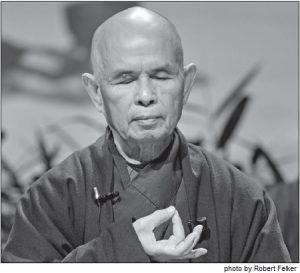
The Order of Interbeing: A third stream of mindfulness teachings came to the West in part due to the U.S. invasion of Vietnam, where the monk Thích Nhất Hạnh and his community were practicing and teaching mindfulness as an integral practice in their non-violent peace work amidst the terrors of the war. As the war raged on and many of his colleagues were brutally murdered, Thay, as his students call him, took refuge in France where he founded the Plum Village international Meditation Center and the Order of Interbeing. There, he continued to teach his unique and highly accessible form of mindfulness which emphasizes the practice of mindful breathing, mindful walking, and the repetition of meditation phrases or gathas, synchronized with inhalation and exhalation. To develop deeper ease and continuity of meditation, words such as calming, smiling and arriving are used to help relax and focus the mind and quell the tendency toward discursive thoughts during meditation practice. Today there are hundreds of centers around the globe teaching Thay’s style of mindfulness practice.
One of Thay’s gifts is his encouragement to bring a gentle, heartfelt, compassionate inner smile to mindfulness practice,—“smiling to our sorrow”—in order to realize that “we are more than our sorrow.” This practice of gentle smiling has influenced mindfulness instruction and how it is often introduced and practiced in the West. Most importantly, his teachings on interbeing—the interconnection of all Life—and the illusion of a ‘separate self’ are fundamental for those who follow this teacher.
Beyond these three primary streams, there are other streams, lineages, and teachers who emphasize a variety of aspects or approaches to the practice, and there are also many teachers and centers that weave together teachings and practices drawn from these different traditions.
Kindfulness | Mindfulness Blossoms As Compassion and Lovingkindness
Being present with kindness and compassion
is being mindful.
– Jon Kabat Zinn
As the practice of mindfulness deepens and matures, it embraces and is responsive to the needs, not only of ourselves, but of all beings who suffer and experience vulnerability or injustice in their lives, society, and world. As many of the foremost Western mindfulness teachers have matured in their practice, the nature and tone of their teachings have warmed, shifting from a more austere focus on “bare attention” and taking on a more compassionate tone that encourages their students to blend mindful awareness with a merciful, warm hearted approach to their mindfulness practice.
It is becoming increasingly more common for mindfulness teachers to expand their studies and practice of mindfulness to draw inspiration from traditions that give greater emphasis to heartfelt qualities such as gratitude, genuine friendliness, compassion, lovingkindness, self-compassion, and engaged social justice action, into mindfulness education and training. This heartwarming, compassionate impulse may be integrated into mindfulness practice simply as a gentle, merciful, inner smile as one musters the courage to look within and mindfully, whole-heartedly embrace the tension, apprehension, sadness or rage found there. Or it may be intentionally cultivated as a robust practice of meditation such as lovingkindness—or metta—wishing well to ourselves, others, and all beings; or generating radiant compassion regarding and embracing the presence of suffering in our lives, relationships, and world; or activating an explicit dedication to practicing mindfulness with an intention of realizing one’s true nature and highest potentials for the benefit of all beings.
As mindfulness matures into kindfulness (Braum, A. 2016), on a societal level, we are witnessing the emergence of more university programs that explicitly include compassion science and encourage compassion-based practices as part of their curriculums. Among the most respected programs in today’s world are:
Stanford University’s CCARE Program- Center for Compassion and Altruism Research and Education http://ccare.stanford.edu);
Mindful Self Compassion- self-compassion.org/the-program/
The Greater Good Science Center- connected with Stanford and UC Berkeley http://greatergood.berkeley.edu
University of Wisconsin’s Center for Healthy Minds- (http://www.investigatinghealthyminds.org/cihmDrDavidson.html);
Mind and Life Institute- https://www.mindandlife.org/
Max Planck Institute’s Human Cognitive and Brain Science- ReSource Program (https://www.resource-project.org/en/home.html )
Mindfulness, Collective Intuitive Wisdom, & Human Flourishing
The world we have made as a result of the level of the thinking we have done thus far creates problems that we cannot solve at the same level of thinking (i.e. consciousness) at which we have created them… We shall require a substantially new manner of thinking if humankind is to survive. – Albert Einstein
Could it be that the global surge of interest in mindfulness is an evolutionary impulse perfectly responsive to the challenges of these times? From our many years of practice, research, and work bringing mindfulness to organizations and communities around the globe, it seems that the greatest value and most highly leveraged application of mindfulness may be to follow Einstein’s advice. How? By equipping individuals and innovation teams with the skills necessary to refine the level of their personal and collective consciousness in order to access the deeper intuitive wisdom necessary to bring forth breakthrough solutions to complex global problems.
As the key to accessing the most-subtle dimensions of intuitive wisdom, the greatest value of mindfulness in this age may be in its capacity to liberate us from our collective ignorance by opening our minds to the wisdom we need to flourish together in this beautiful and fragile world.
One of our most cherished visions and aspirations is to develop cohorts of altruistically motivated, sincere and disciplined individuals and teams, intent on employing mindfulness for accessing or “sourcing” insight from deeper, subtler strata of personal and collective intuitive wisdom. This is in order to bring forth the insights and innovations necessary to resolve the dire challenges of these treacherous times, while promoting human flourishing and thriving for generations to come. (Levey, J. and Levey, M. 2008)

Mainstreaming Mindfulness: Encouraging Trends
In our work and travels with hundreds of leading medical centers, universities, organizations, and governmental groups around the globe over the past 40+ years we are heartened to see an ever widening diffusion of mindfulness teachings. Here are some of the most inspiring examples we have seen:
- Contemplative Science: The rapidly emerging field of contemplative science brings together the best of technology, neuroscience, and inner technology inspired by the wealth of the world’s wisdom traditions giving rise to innovative programs and research in hundreds of universities and respected institutes around the globe. Mind and Life Institute’s International Symposiums on Contemplative Studies have brought together thousands of people from around the world to share their research on mindfulness and many other contemplative practices. (https://www.imconsortium.org)
- Leadership and Contemplative Science: While a myriad of leadership developments are being offered in our world today, few have seriously addressed the development of moral, ethical, and contemplative capacities of leaders. One of the most relevant and inspiring initiatives we have seen in this regard is the Mind and Life Institute’s Academy for Contemplative and Ethical Leadership (ACEL) that we were fortunate to help birth. (https://www.mindandlife.org/legacy-programs/acel/ )The ACEL charter states,
- Mindful Law: Nearly a decade ago Rhonda McGee took a bold step to introduce the first course on Mindfulness in Law class at Berkeley Law School. Since then, 40+ law schools have followed her lead with programs on Mindfulness and Contemplative Lawyering as essential skills for professionals in the judicial system.
- Mindfulness in Medicine: Mindfulness is an essential element of the core curriculum within the 70+ medical schools that participate in the Consortium of Academic Health Centers for Integrative Medicine.https://www.imconsortium.org
- Mindfulness in Government: In recent years, British Parliament’s Mindfulness Roundtable which involved over 120 MPs and Lords from different parties of the government who have trained in mindfulness, gave rise to the development of the Mindfulness Initiative and the Mindful Nation UK Report which encourages the integration of mindfulness in four domains of British society: health care, education, criminal justice, and the workplace. (The Mindfulness Initiative: Mindful Nation UK Report. 2015)
- Wisdom 2.0: Since its inception in 2010, the Wisdom 2.0 conferences have brought together thousands of organizational leaders and consultants from around the planet interested in the interphase of mindfulness, meditation, yoga, leadership, innovation, organizational health and performance, social justice, quality of life, and bottom-line business results. With leaders and presenters from Google, Ford, Facebook, Twitter, LinkedIn, PayPal, Zappos, AETNA, Blackrock, Burning Man, Slack, British Parliament, U.S. Congress, and many other leading organizations to explore the many wise and helpful ways that mindfulness and related practices is delivering measurable value in our lives and world of work. (http://wisdom2conference.com/About)
- Mindful Social and Emotional Learning (SEL): With an ever increasing wealth of affirming data, robust programs are integrating mindfulness with social and emotional learning into a wide array of primary and early childhood development learning programs around the globe.
For a monthly update of compelling research on mindfulness and mindfulness based practices visit: http://GoAMRA.org
These are just a sampling of the significant and inspiring trends that we are seeing in the diffusion of mindfulness into the mainstream mindstream of our world.
References
American Mindfulness Research Association, http://GoAMRA.org
Bodhi, B. 2016. The Transformations of Mindfulness. Published in Handbook of Mindfulness: Culture, Context, and Social Engagement (Mindfulness in Behavioral Health). Edited by Ronald E. Purser, David Forbes and Adam Burke. Springer International Publishing, Switzerland, 2016 https://books.google.com/books?id=nBFVDQAAQBAJ&pg=PA3&lpg=PA3&dq=The+Transformations+of+Mindfulness.+Published+in+Handbook+of+Mindfulness:+Culture,+Context,+and+Social+Engagement+(Mindfulness+in+Behavioral+Health).+Edited+by+Ronald+E.+Purser,+David+Forbes+and+Adam+Burke.+Springer+International+Publishing,+Switzerland,+2016&source=bl&ots=Yh334UtV40&sig=HA4UeflyHZbsU9OCjYGTMouD1LI&hl=en&sa=X&ved=0ahUKEwiZ1vqN3e_ZAhUB24MKHW_dB98Q6AEILzAC#v=onepage&q=The%20Transformations%20of%20Mindfulness.%20Published%20in%20Handbook%20of%20Mindfulness%3A%20Culture%2C%20Context%2C%20and%20Social%20Engagement%20(Mindfulness%20in%20Behavioral%20Health).%20Edited%20by%20Ronald%20E.%20Purser%2C%20David%20Forbes%20and%20Adam%20Burke.%20Springer%20International%20Publishing%2C%20Switzerland%2C%202016&f=false
Bhikkhu, T. 2012. Right Mindfulness.
http://www.accesstoinsight.org/lib/authors/thanissaro/rightmindfulness.pdf
Braum, A. 2016. Kindfulness. Wisdom Publications.
Braun, E., Spring 2014. “Meditation En Masse: How Colonialism Sparked the Global Vipassana Movement” Tricycle. http://www.tricycle.com/feature/meditation-en-masse
Clarke T. C., et al. 2015. “Trends in the Use of Complementary Health Approaches Among Adults: United States, 2002–2012,” National Health Statistics, No. 79, Hyattsville, MD, National Center for Health Statistics, 2015; “Uses of Complementary Health Approaches in the U.S.,” National Center for Complementary and Integrative Health.
Consortium of Academic Health Centers for Integrative Medicine. https://www.imconsortium.org
Gyatso, T. the Dalai Lama. 2001. Dzogchen: The Heart Essence of the Great Perfection. Snow Lion Publications.
https://books.google.com/books?id=4HqLxJRN6MUC&pg=PA254&lpg=PA254&dq=%22dalai+lama%22+Dzogchen+London&source=bl&ots=uKMkzDoubE&sig=j0UcaRAuBVMBTXSju5kDod–hzo&hl=en&sa=X&ved=0ahUKEwizhNa_w5HWAhVBwWMKHQBKA1MQ6AEITDAG#v=onepage&q=%22dalai%20lama%22%20Dzogchen%20London&f=false
Kotler, S. and Wheal, J,. 2016. Stealing Fire: How Silicon Valley, the Navy SEALs, and Maverick Scientists Are Revolutionizing the Way We Live and Work. HarperCollins.
Levey, J. and Levey, M. 2015. Living in Balance: A Mindful Guide for Thriving in a Complex World. Divine Arts. https://divineartsmedia.com/products/living-in-balance-a-mindful-guide-for-thriving-in-a-complex-world
Levey, J. and Levey, M. 2008. Mind Treasure. Intuition at Work. Sterling Stone Publishers.
Mind and Life Institute ACEL (Academy for Contemplative and Ethical Leadership). 2015. https://www.mindandlife.org/legacy-programs/acel/
Mind and Life Institute—Contemplative Science Symposiums. https://www.mindandlife.org/international-symposium-for-contemplative-research/
The Mindfulness Initiative: Mindful Nation UK Report. 2015. http://www.themindfulnessinitiative.org.uk/publications/mindful-nation-uk-report and http://www.themindfulnessinitiative.org.uk
Mingyur, Y. Rinpoche, and Tworkov, H. 2014. Turning Confusion into Clarity: A Guide to the Foundation Practices of Tibetan Buddhism (Boston: Snow Lion, 2014).
National Business Group on Health and Fidelity, July 14, 2016. Corporate Mindfulness Programs Grow in Popularity.
Pinsker, J. March 10, 2015. Corporations’ Newest Productivity Hack: Meditation. Atlantic.
Purser, R., Milillo, J. 12 May 2014. Mindfulness Revisited: A Buddhist Based Conceptualization. Journal of Management Inquiry. https://www.academia.edu/8102895/Mindfulness_Revisited_A_Buddhist-Based_Conceptualization
Purser, R., Ng, E., & Walsh, Z. (2018). The promise and perils of corporate mindfulness. In Chris Mabey and David Knights (Eds.), Leadership Matters: Finding Voice, Connection and Meaning in the 21st Century (pp. 47-63). New York, NY: Routledge.
Thubten, A. 2012. The Magic of Awareness. https://books.google.com/books?id=tJofqSlqmsYC&printsec=frontcover&dq=Anam+Thubten+Thubten+magic+of+awareness&hl=en&sa=X&ved=0ahUKEwjpl5bixJHWAhVD1WMKHb7EAYwQ6AEIKDAA#v=onepage&q=Anam%20Thubten%20Thubten%20magic%20of%20awareness&f=false
Wieczner, J. March 12, 2016. Meditation Has Become a Billion-Dollar Business. Fortune.
Wisdom 2.0, http://wisdom2conference.com/About


